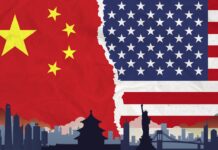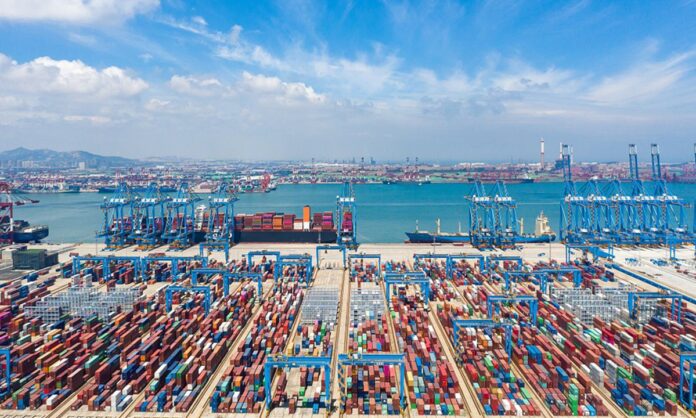By Dr Mehmood Ul Hassan Khan
December 18, 2023 marks the 45th anniversary of the beginning of China’s reform and opening-up. Historically, China was the first socialist country to embark on the path of numerous structural reforms and opening-up. It is good omen that China is still committed to reform and opening-up which would be good for the quick recovery of the world economy.
The Chinese president Xi Jinping has already announced to start new economic path comprising of opening-up, modernization, digitalization and qualitative industrialization.
Comparative study of the last 45 years reveals that during last 45 years China has achieved miraculous socio-economic development enabling it to reduce poverty and generate new jobs. More than 100 million impoverished rural residents have been rescued from the poverty.
Evidently, during 45 years China has succeeded to build the biggest education system, social security system and health care system of the world. The basic insurance now covers 1.05 billion people basic medical insurance participation rate remained stable at 95 percent which vividly reflects immense socio-economic transformation of the Chinese state, society and the system, immensely changing the lives of common people despite all odds and the western propaganda.
Overall, over the last 10 years, China’s economy aggregate has increased from 12.3 percent to over 18 percent of the world economy and its average annual contribution to global economic growth has increased to 38 percent.
For achieving the desired goals of economic diversification, over the past 10 years, China setup 22 pilot free trade zones. First half of 2023 these attracted 18.4 percent of China’s foreign direct investment and contributed 18.6 percent to country’s foreign trade. These have become hubs of FDIs, innovations, modernization, digitalization and of course trans-regional connectivity.
Resultantly, its total economic volumes has increased from 54 trillion RMB (us$7.59 trillion) in 2012 to 121 trillion (US$17 trillion) in 2022. Moreover, it has successfully achieved its first centenary goal building a moderately prosperous society in all respects in 2021.
During the 11th Central Committee of the Communist Party of China (CPC) third plenary session, the Party decisively ushered in a new period of reform, opening up, and socialist modernization which have become new paradigm shift in the new economic era of development.
The successive leadership of China has successfully transformed the country from a poor, agrarian society to a modern global power and propelling the country from margins of the world to the center. In 1978, China’s GDP was $149.54 billion only about 1.75 percent of global GDP, but in 2022, China’s economy, at about $18 trillion, is the world’s second-largest and accounts for about 18.6 percent of global GDP.
Critical analysis establishes that reform and opening-up fits China’s national conditions and has achieved unparalleled dividends which is totally different to Western countries. China’s economic model success has become a role model for the developing countries to rely on their own resources and local realities than to replicate Western models.
Since the 18th CPC National Congress in 2012, China has continued to deepen reform and expand opening-up, leading to rapid development in all respects. Since 2012, China remained the world’s second-largest economy, the world’s top manufacturing power and top trader.
China is now leading in many fields, including in the number of Fortune 500 companies, the number of 5G stations, the number of broadband users, and the length of high speed railways and highways.
Between 2013 and 2021, China’s annual GDP growth rate averaged 6.6 percent, far higher than the global average of 2.6 percent. Its contribution to global growth averaged about 38.6 percent during that period, higher than the combined contribution of G7 countries.
After the tremendous success of the past 45 years, it seems that China will continue to deepen reform and expand high-level opening-up going forward, creating greater opportunities for global businesses and new technologies, the digital economy, green development will be the main engine of growth.
The recently concluded Central Economic Work Conference has stressed that it is crucial to strengthen the driving force for development through reform and opening up, ensure the advancement of both profound reforms and high-level opening-up. Among specific measures, the meeting said that barriers shall be removed to make it easy for foreigners to do business, study and travel in China.
The Third Plenary Session of the 11th Central Committee of the Communist Party of China (CPC) kicked off in Beijing on December 18, 1978, marking the beginning of China’s journey of reform and opening-up. Over the past 45 years, China has undergone various stages of reform, from the initial reform of the economic system to the comprehensive deepening of reform.
In summary, due to last 45 years reform and opening-up have achieved remarkable successes in the diverse sectors of economy, investment, manufacturing, infrastructure development, and trans-regional connectivity and resultantly China has now entered into new era of economic development comprising of modernization, qualitative industrialization, human capital, green transformation and greater trans-regional connectivity in shape of BRI and CPEC.
It is suggested that the policy makers of China should emphasize on further institutional building and establish a more mature and solid system in all aspects. They should transform the advantages of the system into the effectiveness of good governance. There should be more people, nature, and investment friendly policies in the days to come.
The 18th CPC National Congress has already accelerated China’s modernization drive which is now creating numerous socio-economic wonders in the country. Good governance, transparency, opening-up, economic socialism, protection of human values and befitting rural-urban integration should be the mantra.
It predicts that four modernizations in four areas of development mainly, industry, agriculture, defense, and science and technology will play an important role in socialist modernization and modernizing China’s system and capacity for governance.
Undoubtedly, the CPC plays a fundamental and leading role in achieving China’s socialist modernization. It is accomplished through the party’s strong leadership, guidance of advanced ideology, selection of the correct path, and effective governance of the country with institutional advantages. It has been dubbed as the largest whole process democratic system in the world which shows its effectiveness and participation in the socio-economic development of the country. Thus China, but also to revolution, innovation, rejuvenation, shared benefits and unrelenting hard work.
The author is Executive Director of Center for South & International Studies (CSAIS) Islamabad.





















